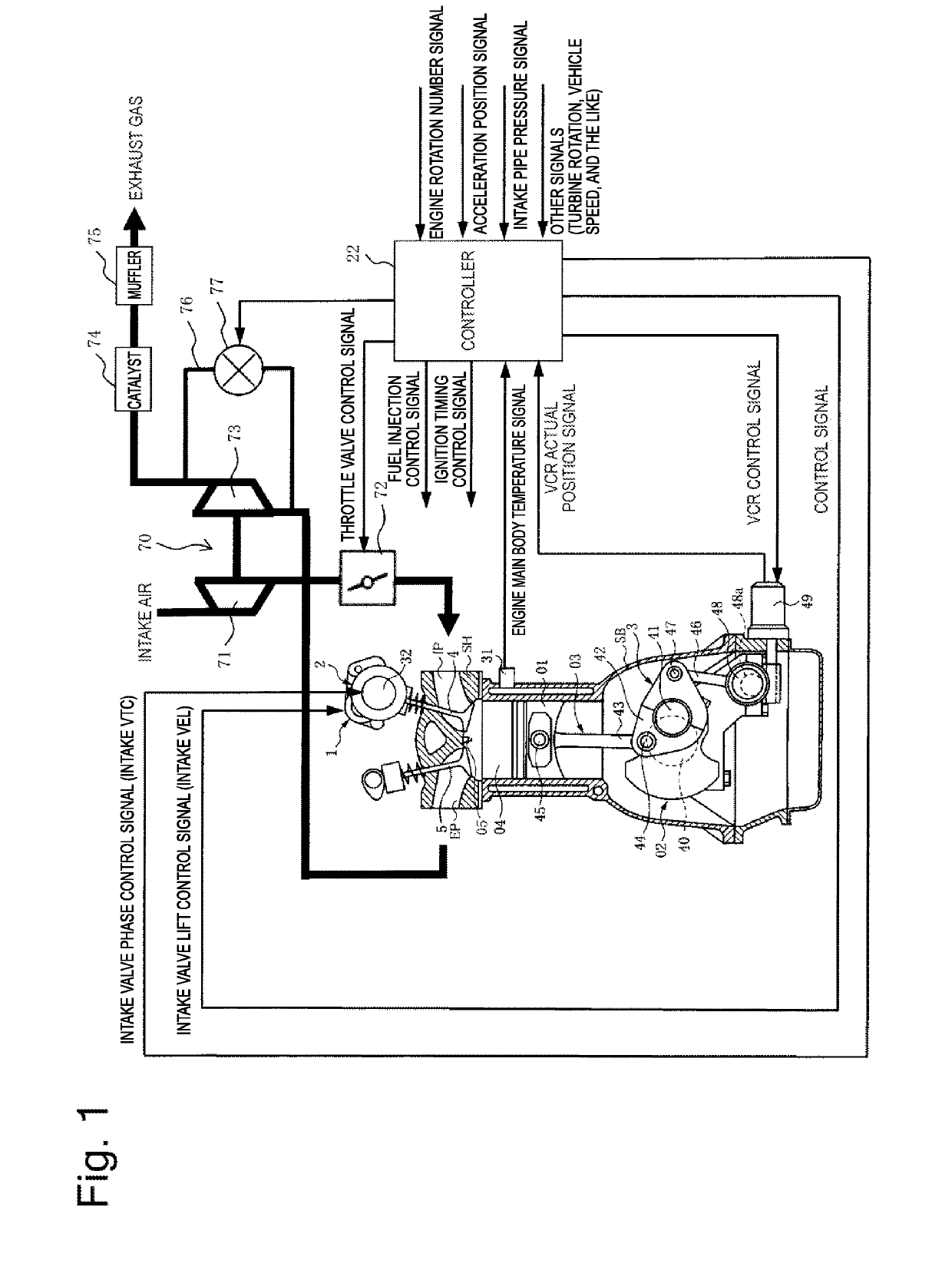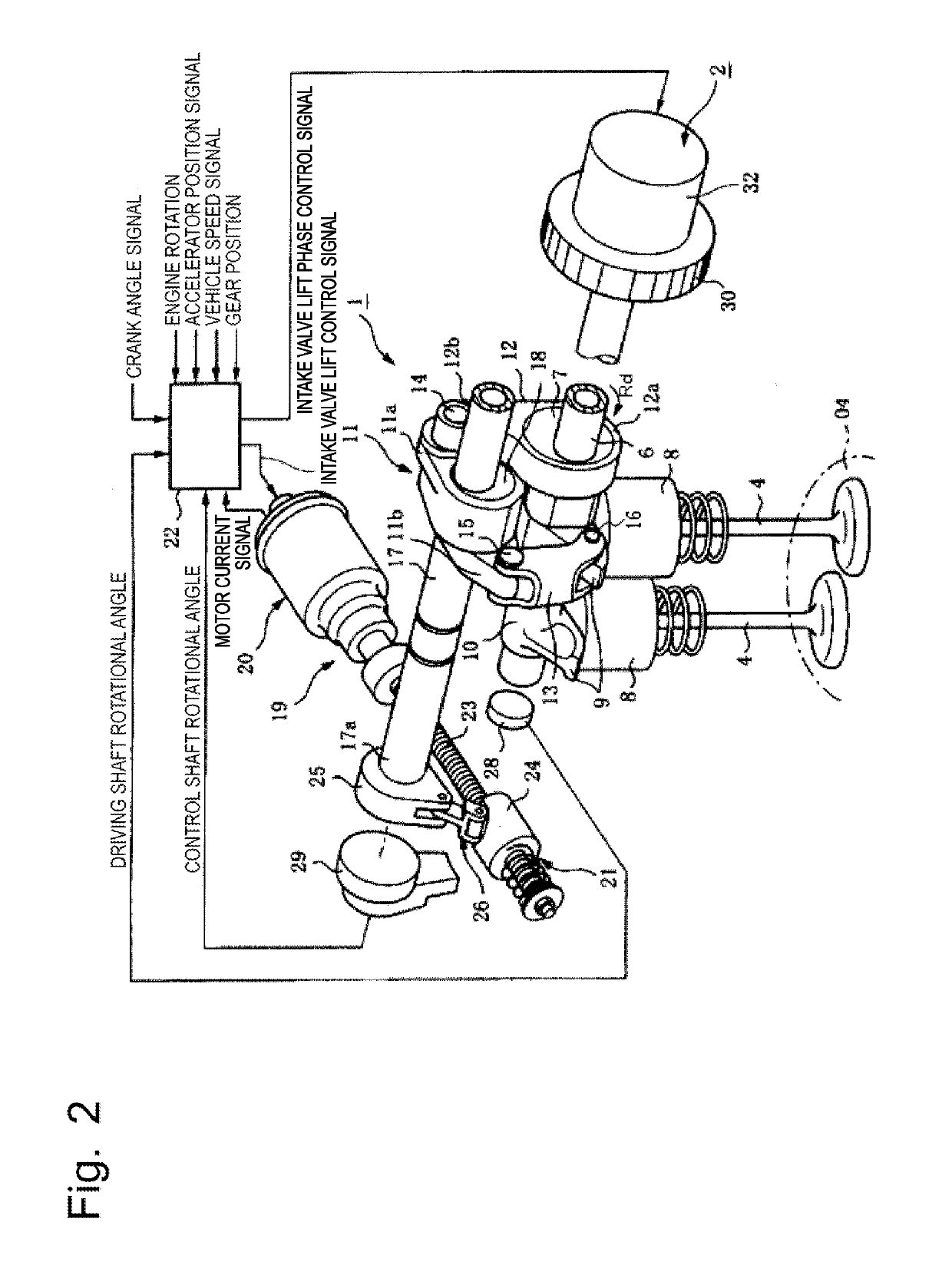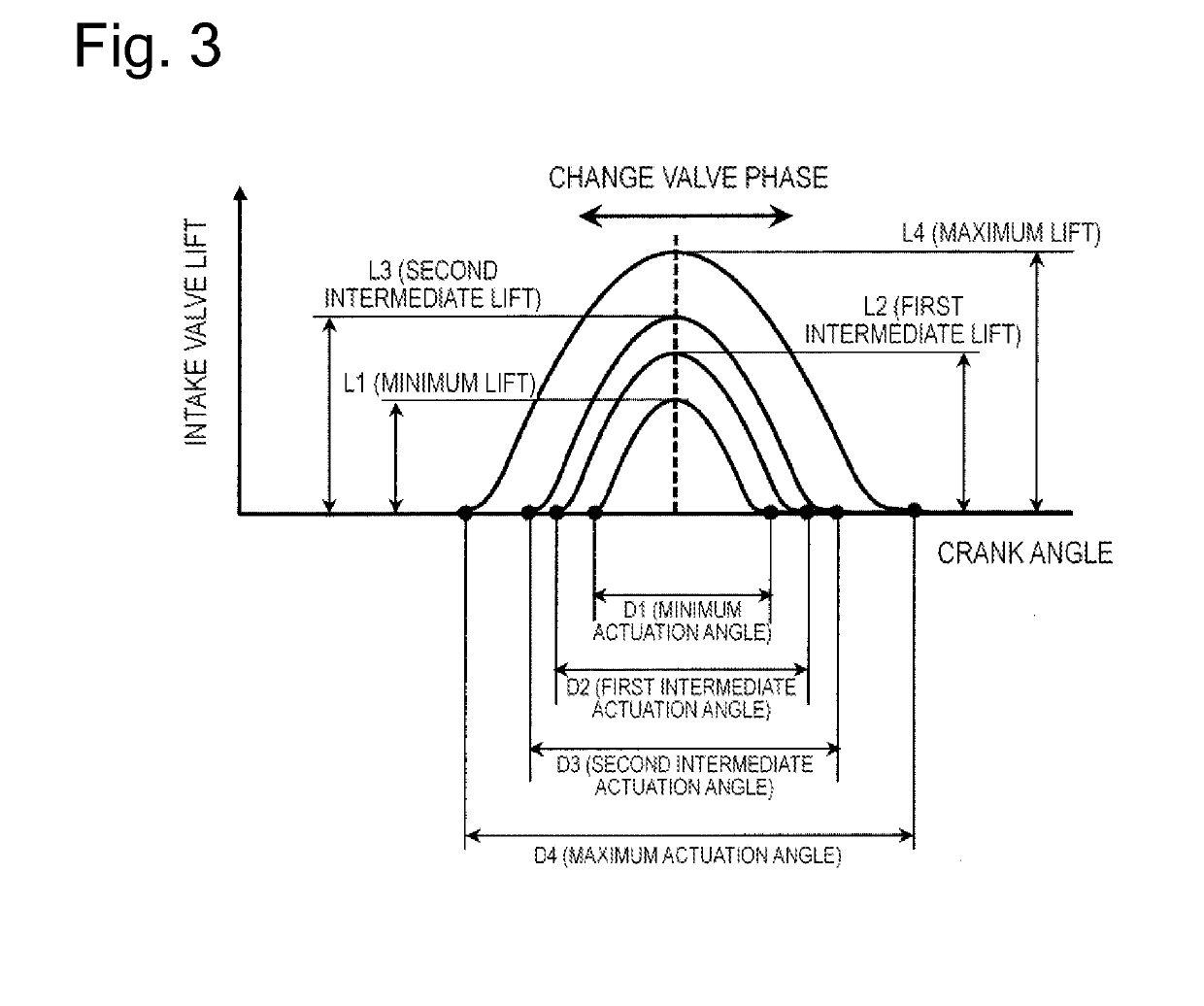Variable system of internal combustion engine and method for controlling the same
a variable system and internal combustion engine technology, applied in combustion engines, electrical control, valve arrangements, etc., can solve the problems of reducing thermal efficiency, mechanical expansion ratio, mechanical compression ratio, etc., to reduce the effective compression ratio, improve thermal efficiency, and enhance knocking resistance capability
- Summary
- Abstract
- Description
- Claims
- Application Information
AI Technical Summary
Benefits of technology
Problems solved by technology
Method used
Image
Examples
first embodiment
[0025]A variable system of an internal combustion engine according to a first embodiment of the present invention will be described, and FIG. 1 illustrates an overall configuration of the variable system of the internal combustion engine to which the present invention is applied.
[0026]First, a basic configuration of the variable system of the internal combustion engine will be described with reference to FIG. 1. The variable system of the internal combustion engine includes a piston 01, an intake port IP and an exhaust port EP, and a pair of intake valve 4 and exhaust valve 5 for each one of cylinders. The piston 01 is provided vertically slidably due to, for example, a combustion pressure in a cylinder bore formed in a cylinder block SB. The intake port IP and the exhaust port EP are each formed inside a cylinder head SH. The pair of intake valve 4 and exhaust valve 5 is provided slidably in the cylinder head SH, and opens and closes opening ends of the intake and exhaust ports IP ...
second embodiment
[0092]Next, a second embodiment of the present invention will be described with reference to FIG. 9. The above-described embodiment proposes the method that controls the waste gate valve 73 to close it when the engine torque reaches the maximum engine torque Td set to guarantee the durability of the driving system. The present embodiment is different therefrom in terms of controlling the waste gate valve 77 to open it around the maximum engine torque Td. Further, the present embodiment is different from the first embodiment in terms of closing the intake valve at the closing timing IVC that is not the closing timing IVCd on the retard-angle side but is a closing timing IVCdad on the advance-angle side at the maximum engine torque Td. The closing timing IVCdad has approximately the same characteristic as the closing timing IVCa in the low load region.
[0093]Now, the closing timing IVC of the intake valve at the maximum engine torque Td is set to the retard-angle side as seen in the fi...
third embodiment
[0106]The second embodiment proposes the example of a so-called “early-closing Miller cycle”, which reduces the pump loss by advancing the closing timing IVC from the intake bottom dead center BDC with respect to the closing timings IVCa to IVCb of the intake valve in the low load region.
[0107]On the other hand, the third embodiment proposes an example of a so-called “late-closing Miller cycle”, which reduces the pump loss by retarding the closing timing IVC from the intake bottom dead center BDC as indicated by the closing timing IVCd similarly to the first embodiment even in the low load region, and an example of a different variable actuation valve configuration from the first embodiment. The present embodiment employing this “late-closing Miller cycle” will be described with reference to FIGS. 10(a) to 10(d).
[0108]The lift characteristic is controlled with use of the first variable actuation valve mechanism 1 in the first embodiment, but the lift amount characteristic of the int...
PUM
 Login to View More
Login to View More Abstract
Description
Claims
Application Information
 Login to View More
Login to View More - R&D
- Intellectual Property
- Life Sciences
- Materials
- Tech Scout
- Unparalleled Data Quality
- Higher Quality Content
- 60% Fewer Hallucinations
Browse by: Latest US Patents, China's latest patents, Technical Efficacy Thesaurus, Application Domain, Technology Topic, Popular Technical Reports.
© 2025 PatSnap. All rights reserved.Legal|Privacy policy|Modern Slavery Act Transparency Statement|Sitemap|About US| Contact US: help@patsnap.com



